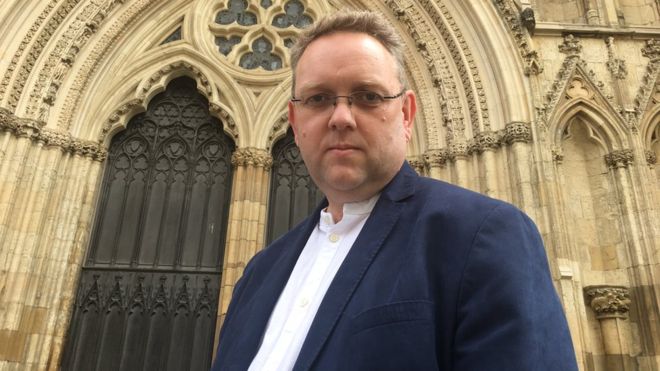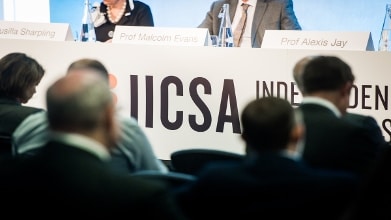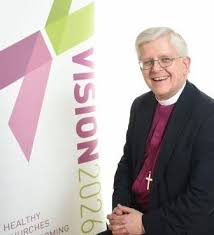
Over the years I have given a great deal of thought to leadership in the Church. In the world of business there are individuals who earn a good living in teaching others how to be leaders. I have not read these books on leadership or attended any of the expensive training courses on offer. But, like everyone, I long to find a good leader in whatever organisation I belong to. We, the followers, have a fairly good idea about what we want from our leaders and it is perhaps my prejudices that are on display today as we reflect on the powerful testimony of Matt Ineson who gave evidence to IICSA.
In my mind I identify three characteristics of a good leader. The first of these is that a leader has a genuine identification with the followers. Identification needs to work in two directions. There should be a sense that the leader is one of the group, and, at the same, time the group might feel itself in some way represented by its leader. In the case of a bishop that would mean that every time the bishop goes to a parish or has any encounter with clergy or people, he/she would be listening carefully to what is being said. Because of the problem of deference, one issue for a sensitive bishop is that some people he meets do not speak with frankness. This will require gifts of listening and sensitivity if the barriers that deference has erected are to be overcome.
The situations that Matt Ineson described in his powerful testimony on Wednesday morning at IICSA showed us clearly that this first facet of leadership was not present in his encounters with church leaders. Every time Matt made a disclosure to a senior member of the clergy, including six bishops, we felt strongly that the bishops concerned were seriously failing in ways that went beyond simply failing to deal with the disclosure. In each case of disclosure, Matt experienced from the bishops displays of impatience, irritation or detachment. Each of these reactions was, arguably, betraying a failure of leadership. Identification with a member of the ‘followership’ should always be part of leadership. When this fails or deteriorates over time, we can see narcissistic tendencies creeping into the conduct of leaders. By ‘narcissistic tendencies’ I mean the way that the power of office becomes like an addictive substance. Instead of a constant recall to the example of the servanthood of Jesus, the senior church leader has been infected or seduced into self-inflation or an expanded ego. Certainly we would suggest that the leader has already failed seriously in this one key aspect of leadership – the readiness to identify and genuinely look out for the highest interests of those who accept in him/her the role of leader. In Christian language the leader is expected to love those who follow.
The second part of leadership is the ability to articulate a vision for the future. Any leader should have the capacity to inspire the followers with some hope that the future is brighter. If the leadership is not able to inspire some sense of purpose for the future, why should anyone want to follow such a person? Any institution worth joining, whether a club, a church or a political party, is making implicit promises to the followers. Join our group and we will travel together to make the world, the local neighbourhood or people in general better in some way. Leadership is often there to inspire and give hope that the one up front is able to bring these changes into reality.
The portrait that Matt painted this morning of bishops playing grubby games with legal processes at the expense of victims, made it difficult to see how these bishops would be capable of articulating an inspiring vision relevant to us. The Church, as represented by its own leaders, seemed concerned only to protect itself from moral or financial liability. The fact that Matt has emerged from so much traumatic experience at the hands of the ‘system’ is a miracle in itself. We must be grateful that he was so clearly able to articulate the experience of a survivor with a clear grasp of both his own story and the processes involved in the tortuous system that he had to negotiate. His case was helped by the physical presence of his local MP, Tracy Brabin. She has herself attempted to communicate with Lambeth Palace direct on Matt’s behalf. It seems that even House of Commons notepaper does not have the power to evoke an answer to her legitimate questions. The capacity to inspire with a vision of the future, so important in the task of effective leadership, seems to be hard to maintain in the context of the unedifying story of how some bishops in the Church of England collude together and obstruct justice and openness.
The final expectation that followers have of their leaders is that leaders will be able to demonstrate complete integrity and honesty. I have written on the topic of integrity fairly recently, so I have now little to add to that description. All of us have inside ourselves a picture of what we can be, inspired by ideals gained from outside as well as from within. One occasion when integrity becomes severely compromised is when we allow someone else to control us in some way. The cult narratives that I listened to last week often related how powerful leaders infiltrated the personalities of their followers, so that there was a dramatic inner change. The attack on integrity of leaders that we seem to be witnessing this week at IICSA is not coming from cult leaders. It is the pressure of the institution itself. The Church, its power and reputation in society, has become for some of its leaders so important that they will risk their own personal integrity to defend it. The tales we heard this morning of dishonesty, lying and power games that some bishops have been exhibiting in Matt’s case, suggest that once again a claim to exercise true leadership in the church is questionable. If Matt’s claims are not rebutted, and I don’t expect they will be, then they continue to stand. It is hard to see how resignations will not take place. The accusations that he makes against the past treatment of survivors are impossible to ignore.
On Wednesday 10th July 2019, a number of strong accusations were made against the senior level of the leadership of the Church of England. Until and unless these claims are shown to be false (which is unlikely) it can be said that the present senior tier is not adequately fulfilling the three aspects of leadership that I have set out. One wonders how the Church can continue without honesty, transparency and truth being allowed to flourish. Even if the Archbishops and senior lay staff manage to play down the seriousness of the accusations brought forward by Matt this morning, the cancer of dishonesty will still lie dormant within the institution. The problem for any institution corrupted in this way is that it subtly lowers the morale of members and impedes the nurturing of a a new generation of leaders. This is serious and we await to see whether the Church will find a way forward from these severe dents to its reputation and damage to its standing among the general public of England.








